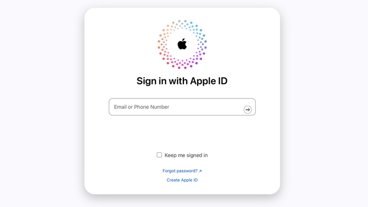Every week Apple doesn't act on iPhone 4 antenna could cost $200M
Analyst Mike Abramsky with RBC Capital Markets said Wednesday that he is hopeful that Apple will address the concerns of users over the iPhone 4 reception by providing customers with free protective cases. But he also acknowledged that the Cupertino, Calif., company could also face a "broad repair scenario, or even a full recall."
Despite the issues, Abramsky said he views the situation as a potential buying opportunity for investors. He believes that Apple may inevitably fix the problem, and even though a fix will impact the company's bottom line, he said "Apple can easily afford it."
He presented three potential outcomes for the issue, all of which assume that the problem affects 100 percent of iPhone 4 owners. Abramsky believes providing cases to 3 million people would cost $45 million, while repairing 3 million handset would cost $300 million. A complete recall of the product, in the most extreme scenario, would cost $900 million.
Even if bad publicity regarding reception with the iPhone 4 does reduce sales in the near term, he doesn't expect it to last.
"We expect iPhone 4 demand may rebound quickly, still outpacing supply and — along with global channel fill — may mitigate possible near-term slowdown in sell-through," he wrote. "The issue, in our opinion, is likely to blow over with media and consumers refocusing on iPhone 4's appeal, market opportunity and strong demand."
The issue gained steam this week when nonprofit group Consumer Reports said it cannot recommend the iPhone 4 due to a reduction in signal that is experienced when covering the bottom left side of the device with one's hand. That was a 180-degree turn from the publication's previous stance, when it noted that there was "no reason" not to buy an iPhone 4, and said it was unable to recreate the signal issues.
Consumer Reports changed its mind after testing three separate iPhone 4 handsets inside of a controlled radio frequency isolation chamber. The test found that the iPhone 4, and not the iPhone 3GS or Palm Pre, experienced signal loss when held improperly.
Apple has argued that any mobile phone loses reception when held incorrectly. It has also said that using a case, like the company's own official "bumpers," prevents users from touching the metal band on the exterior of the phone, which doubles as the handset's antennas, and will resolve the issue. Consumer Reports offered its own solution, placing duct tape on the bottom left of the phone.
Apple has also planned a software fix to address the fact that the iPhone 4 reports signal bars incorrectly. However, that software error will not prevent the loss in signal experienced when holding the phone improperly.
The Consumer Reports update gained a great deal of mainstream media publicity. Most recently, the Associated Press filed a report noting that Apple has remained silent on the issue, not responding to requests for comment from the media. The report also spoke with analysts who, like Abramsky, do not believe that the issue will hurt sales in the long run.
Despite the signal issues, Consumer Reports found that Apple's iPhone 4 was the best smartphone available in all other categories, citing an "excellent" display, navigation, Web browsing, multimedia and battery life. The telephone and messaging capabilities were also ranked "very good," while voice quality was "good."
 Neil Hughes
Neil Hughes











 Mike Wuerthele
Mike Wuerthele

 Malcolm Owen
Malcolm Owen
 Chip Loder
Chip Loder

 William Gallagher
William Gallagher
 Christine McKee
Christine McKee
 Michael Stroup
Michael Stroup






